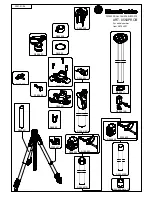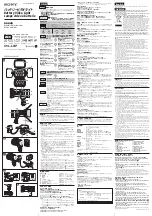
7. Terminology
59
preserving high image quality. With a data transfer speed of 25 Mbps, DVCPRO is a
professional-level format that differs from the DV format in that its audio data is
synchronized with the video data (locked audio). It is also sometimes called DVCPRO
25M to differentiate it from other DVCPRO formats. Because the DV format also has a
data transfer speed of 25 Mbps, some nonlinear editing systems do not distinguish
between DVCPRO 25M and DV.
[P.5]
Progressive scanning:
In an interlaced format, which has been the mainstream in TV
broadcasting formats, fields containing either an odd-numbered or even-numbered line
are alternately scanned, and a pair of these odd-numbered and even-numbered lines is
used to form one frame. As a result, there is a time lag between the odd-numbered and
even-numbered lines, and a shift in the image inevitably occurs between them when
they are displayed together. Progressive scanning, on the other hand, scans all of the
lines in each field, so there is less degradation in the resolution of moving images than in
interlaced scanning, and less flicker.
[P.7]
Frame:
TV images express motion by continually displaying 30 still images per second. Each of
these individual still images is called a frame. With interlaced scanning, where odd- and
even-numbered scanning lines are alternately displayed, each set of scanning lines is
called a field and two fields are combined to form one frame.
[P.8]
Cine-like gamma:
This is a gamma curve that allows a video camera to obtain the same wide range of
latitude (ability to reproduce gradation) as movie film.
Dynamic range:
The range within which values or variables change. The dynamic range for images refers
to the luminance range.
Gradation:
The steps of contrast in an image.
Gamma curve:
A conversion curve used to allocate levels of image brightness to data in a nonlinear
manner.
[P.11]
MPEG2:
MPEG stands for the Moving Picture Experts Group, a committee that studies
standardization of multimedia, established jointly by ISO (International Organization for
Standardization) and IEC (International Electrotechnical Commission). MPEG2 is one of
the standards established by this committee, along with others, including MPEG1 and
MPEG4. These standards are based on interframe compression technologies that
compress data by detecting and saving only the image parts that express movement
between one frame or field and the next, and combinations of intraframe compression
technologies. MPEG2 is used in HDTV and other types of satellite digital broadcasting,
and in DVD package media, among other applications.
Dropout:
This is a phenomenon in which parts of the playback signal are lost or weakened
because they are not properly transmitted. It occurs when particles peel off of a
magnetic tape, or when foreign matter adheres to the magnetic surface of the tape.
[P.13]
4:2:2:
Video component signals in which sampling frequencies for the brightness signal and
color difference signals (Y, R-Y, B-Y) have a ratio of 4:2:2.
Digital component signal:
A digital video signal in which the brightness signal is separated from
the color difference signals. In a broad sense, component signals include RGB and Y/C
signals, but they are more often used to refer to Y/Pb/Pr signals in which a matrix circuit







































